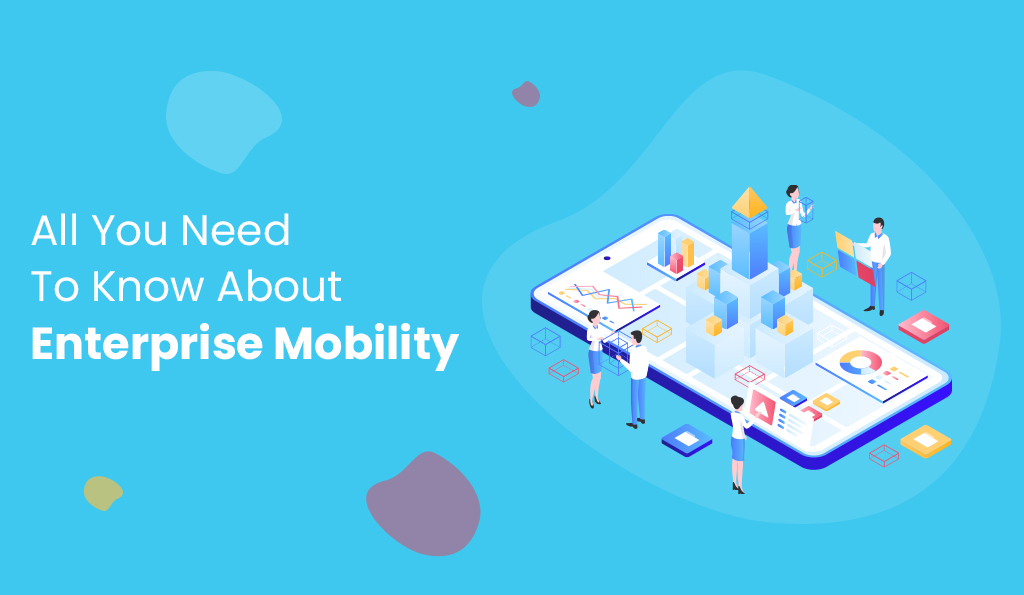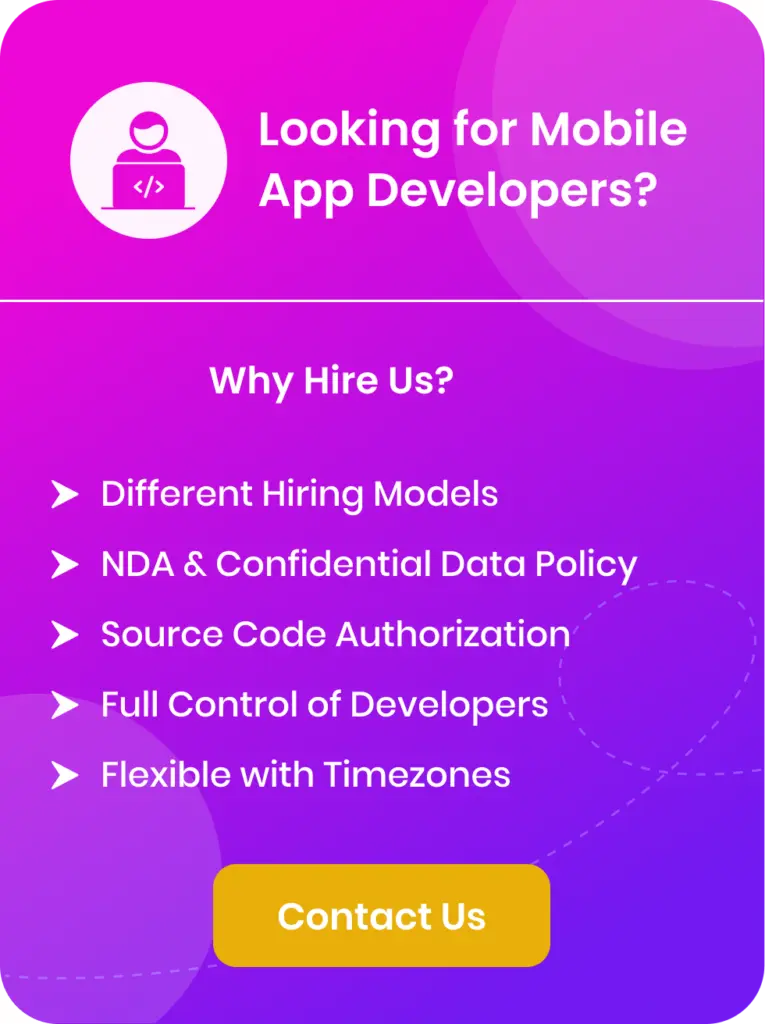
As the IT industry expands exponentially with each passing year, it provides an opportunity for businesses to work from anywhere across the globe, using the revolutionary concept of Enterprise Mobility. Smartphones and tablets are available to enhance everything from the productivity of employees to how employees interact with their clients and get noticed in a highly competitive market.
As MNCs expand and multiply across the globe, they are trying to incorporate modern mobility strategies with the existing IT business models. Making use of enterprise mobility services can save time as well as money and resources and offers a good return on investments. The trend line is evident that laptops, as well as desktops, have been replaced by Compaq tablets and smartphone solutions. Are you interested in knowing what’s new in Enterprise Mobility? The full potential of this technology is in the process of realizing its full potential.
A forecast prepared by Markets has stated that the value of Enterprise mobility would increase in the amount of USD 73.30 Billion with a CAGR of 15.87 percent by 2021.
What exactly is Enterprise Mobility?
If employees within an organization are able to work from anywhere with specific software and apps, this is known as Enterprise Mobility. It’s not just about work, it also allows for the storage of complete data, sharing information important announcements, and connecting various departments in an organization.
Let’s get back to the reasons why enterprise mobility is crucial and the advantages of implementing it within your company.
The benefits of enterprise mobility
1. Storage of data:
Enterprise Mobility enables enterprises to keep their data collection available to everyone within the organization. It also allows employees to keep track of all work-related information and helps enterprises keep records of their employees.
2. Improved productivity:
Mobility permits staff to collaborate from wherever they are and helps them avoid unnecessary tasks. Thus, it leads to an increase in productivity.
3. Improved user experience:
The software and applications allow enterprises to connect with their customers, understand their needs, and respond to their concerns. This allows businesses to offer the best user experience to their clients.
4. Cost reduction:
It is interpreted, implementing mobile technology in enterprises allows employees to work from home, which helps to reduce office expenses. Mobile apps for the enterprise that are customized allow them to work from their mobile devices at any time and from anywhere.
5. Improvised security:
With enterprise mobility, there are EMM (Enterprise mobile management), IAM (Identity and access management), MDM (Mobile device management) along with MAM (mobile application management) to add an additional level of security to your data and personal information. They all offer the security of exchanging information that prevents security breaches.
6. Better collaboration:
Despite various places, enterprise mobility assists employees to work together through EMM’s mobile phones. It allows all employees to stay connected on a regular basis.
7. Communication:
That is transparent and efficient while sharing all data at once with all employees in your department ensures that communication is clear and efficient.
How do you develop a successful Enterprise Mobility Strategy?
The digital transformation of an organization digitally is known as a successful enterprise mobility strategy. It is the primary element of implementing mobility within your business. Your strategy for mobility will determine the outcome of your business’s digital transformation. Every day, the customer demands change and organizations must work to address it together. In addition, sometimes, employees aren’t able to be present all days of the year at work. This is why the enterprise’s mobility can make it much easier for employees to manage their work processes. It is also easier for companies to promote. Here are some excellent methods to build effective enterprise mobility.
- Select the right platform
- Learn to understand the needs of the customer
- A solid delivery structure for delivery.
- Make sure you are clear about the organization’s objectives
- Plan the budget
- Accessibility and scalability
- Secure API’s to enhance user experience
- Better reports and servers for back-ends
- Develop a security plan and policy
- Compare the analysis of the rival
Making everything happen via your phone is fantastic, but implementing it without a strong framework can leave you back on track. There will be plenty of obstacles and there’ll be a variety of group operations. Only the best strategy can help you get there.
Striking Buzz in Enterprise Mobility
1. Security for Enterprise Mobility
Today, organizations allow employees to stay connected to their mobile devices. This is why security is a major issue. No matter if the company or business model that allows BYOD issues this device; the company infrastructure must have a strategy for the mobility process that allows access to information for employees on mobile.
Mobile devices are a key component for developers in the last few years and malware is being developed making this a priority for the top platforms. The types of malware are different for each OS. For E.g. malware targeted at android phones would not work on devices running iOS. Thus, it is one of the advantages of amazing tools. It’s likely to enable employees on the move to monitor and communicate with one another. Additionally, IT personnel will find it easy to monitor the apps and the data that is gathered in the context of enhanced security procedures.
2. Cloud-based Enterprise Mobility
For a sustainable implementation for the long-term use of Enterprise Mobility and multi-platform enterprise management, without compromising security, modules need to move toward the cloud. Mobile functions as an end-to-end device and cloud services act as a back-end process. Thus, cloud services are a back-end operation. Clouds are a must because they can store data and act as a back-end, with mobile devices meeting front-end needs. Integration of mobile devices and systems to the cloud is becoming more popular the present. Mobility lets employees travel across the globe, and, with cloud services, they can enjoy uninterrupted and safe access to company information.
3. Improved User Experience
The development and design of mobile devices is now a booming field however the main considerations are still whether it’s friendly to users or not. The excitement is evident as demand for ease of navigation and accessibility and the enterprise mobility management systems can be seen with the drastic shifts in the design of forms that require a more intuitive and user-friendly increase. Every stage of the user’s experience must be taken into consideration starting with logging into the application, accessing data, and then manipulating it. It should be speedy and efficient and provide access to data and manipulation from any location.
4. A Convergence between Desktop and Mobile
Since MS released Windows 8 OS, we’ve seen numerous apps that share the same design and layout both online and on the native Windows 10 platform. User interfaces of Windows 10 are the best example of how mobile and desktop converge to form a single interface. The ability to use touch and fluidly overlapping screens and, most importantly accessibility via grid-like integration capabilities will be the central feature of any software or application interface. Soon, enterprise-grade applications will follow this trend. The convergence of mobile OS and desktop OS is the most popular trend in enterprise mobility.
5. The growth of IoT
With increasing numbers of devices, such as smartphones, tablets, computers household appliances, as well as automobiles being online, the volume of data that is stored within the cloud could rise.
34 billion connected devices are predicted to be available by 2020. Insider Business Insider
This massive growth in the number connected to internet devices will lead to an explosion of data that needs to be compiled using Enterprise Mobility tools and applications.
According to the situation and scenario, it’s evident the future will see a rising demand for developers to develop additional analytics tools, and CRM applications too, which were designed to work for the mobile format. It’s unlikely to be straightforward, and developers will require ways for users to use information effectively.
6. Challenges
Even though the implementation of Enterprise Mobility solutions might sound simple, this isn’t always the situation. The ability to enable real-time access to information on smartphones is the biggest issue that must be addressed. There are problems with corporate mobility related to technical problems as well as concerns about security for mobile devices. The research and development process is the key to conquering the majority of these issues over time and making mobile devices more user-friendly.
7. Future of Enterprise Mobility
Enterprise Mobility is the present as well as the future for this IT industry. In order to compete and thrive in the market, businesses must adopt this innovative idea. Businesses will more and more adopt a BYOD (Bring your own device) policy throughout the world as well as the safety of the company’s data will receive the most attention. What device needs to be allowed access to which information will need to be defined and the process of implementing this would be a technical challenge. With the use of enterprise mobility, companies can cut operational costs, boost efficiency, and stay in the game.
The reason iTechnolabs should be your partner in IT for Mobility Management
In order to achieve success to be successful in Enterprise Mobility, one needs an experienced IT partner who is aware of the limitations and is adept at resolving the complexity in order to maximize mobility management’s incredible advantages. iTechnolabs has demonstrated expertise in helping thousands of startups become Fortune 500 companies. They also assisted in leveraging the top cloud and enterprise-level mobility management tools. Are you interested in chatting? Let’s get connected.

